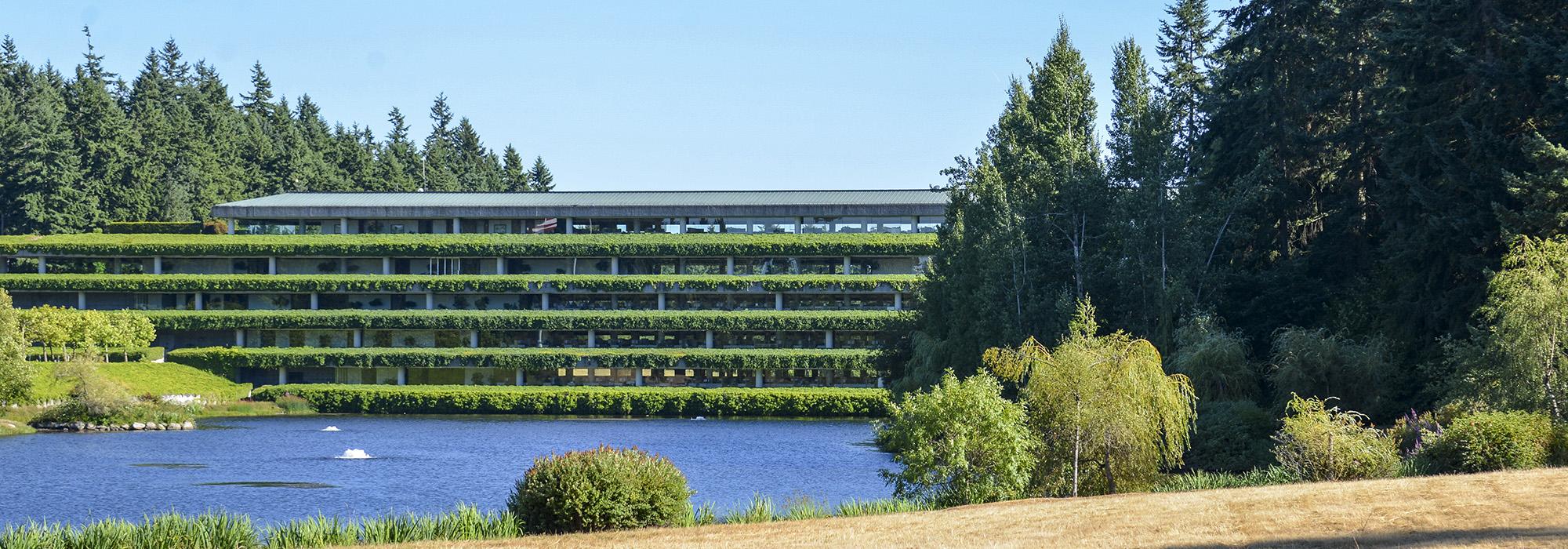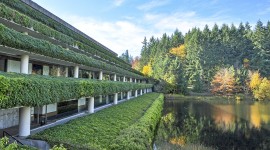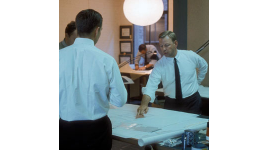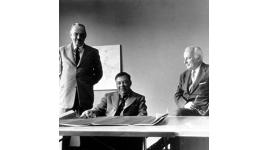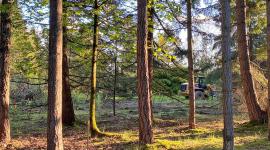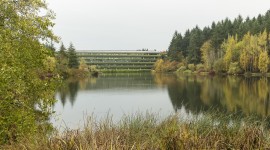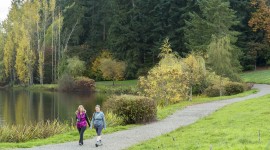Advocates Appeal Development of Iconic Weyerhaeuser Campus
On June 20, 2019, a hearing examiner with the City of Federal Way, Washington, will begin three days of hearings in a legal challenge to proposed warehouse construction on the historic Weyerhaeuser headquarters campus, some 23 miles south of Seattle.
Save Weyerhaeuser Campus (SWC), a local non-profit organization, is appealing both the October 26, 2018, environmental Mitigated Determination of Nonsignificance (MDNS) and the February 4, 2019, land-use approval of the “Warehouse A” proposal. Among many other issues, SWC’s appeal states that the project does not meet conditions of the city’s policies, because it does not “identify and encourage the preservation of lands, sites and structures that have historical significance.”
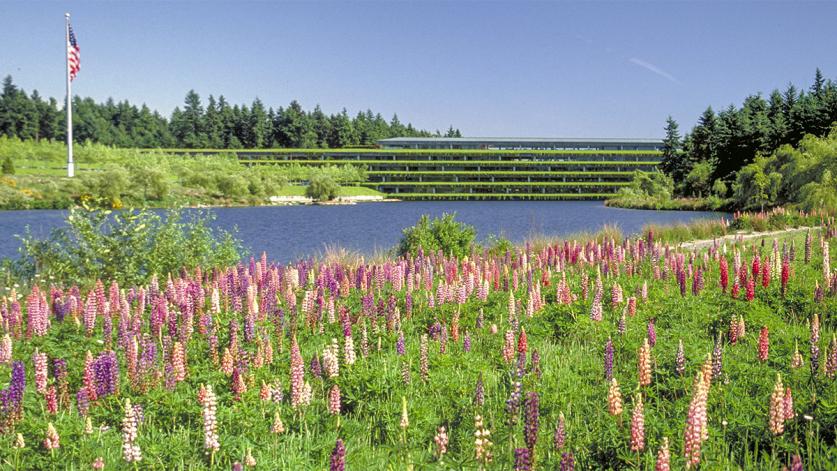
Warehouse A is one of five warehouse/industrial structures (totaling 1.5 million square feet) that are proposed for the campus. Warehouse A would be 225,000 square feet, include 287 parking spaces, and would create as many as 199 semi-truck trips daily, in addition to passenger vehicle traffic. The MDNS document issued by the city essentially states that the building is unlikely to have a negative impact on the historic, designed landscape (although some mitigation is required for other impacts).
Testifying in support of SWC will be the Washington Trust for Historic Preservation, which has been “advocating for the remarkable architectural, environmental, and historical significance of this Campus since 2016,” according to a letter submitted in the case. The Washington Trust placed the campus on its “Most Endangered” list in 2017.
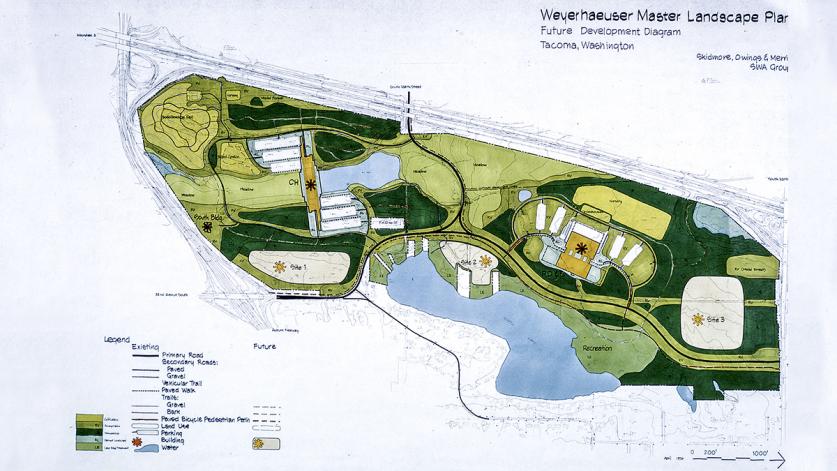
Besides being eligible for the National Register of Historic places, “it is our professional opinion that the Campus would be eligible for designation as a National Historic Landmark,” wrote the Trust. That opinion is shared by The Cultural Landscape Foundation, which noted in a letter to the Washington Trust that of the fewer than 2,600 NHL designations across the United States, only some 80 of those properties are designated for significance in the area of landscape architecture. Washington State has 24 NHLs, according to the National Park Service.
In addition, the Trust noted, “due to its massing, siting, and design, Warehouse A is not thoughtfully integrated into the existing, carefully-crafted landscape. Instead of situating and designing the building in a way that would be sensitive to the existing Campus, the building’s currently proposed location is alarmingly close to the former headquarters building and intrudes on the tree buffer between the site and the former headquarters, which is an intentionally designed landscape element of the historic Campus.”
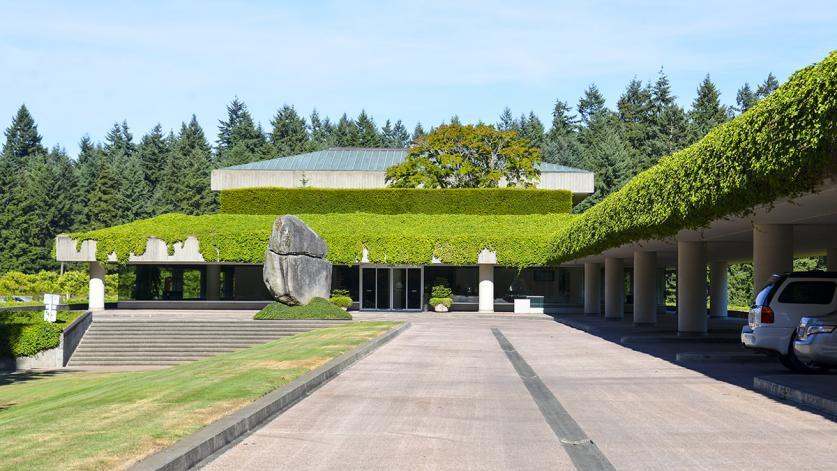
In an April 5, 2017, letter to the city, the project applicant stated: “The former Weyerhaeuser corporate headquarters building is not part of this (Warehouse A) project. We do not question whether the building would be eligible for (national historic) listing, but assert that listing this building is not necessary for the proposed project.”
After the MDNS was released, the Washington State Department of Archaeology and Historic Preservation (DAHP) issued a letter on November 8, 2018, outlining and reinforcing its position on the matter. The letter stated that the agency “does not agree with the MDNS determination for this application” (emphasis present in the original document) and that the agency’s “previously submitted comments were not appropriately considered during the review and comment period.” DAHP went on to say that it had yet to receive a comprehensive survey and inventory of the former Weyerhaeuser headquarters campus, which it considers essential for evaluating any potential adverse impacts to the site.
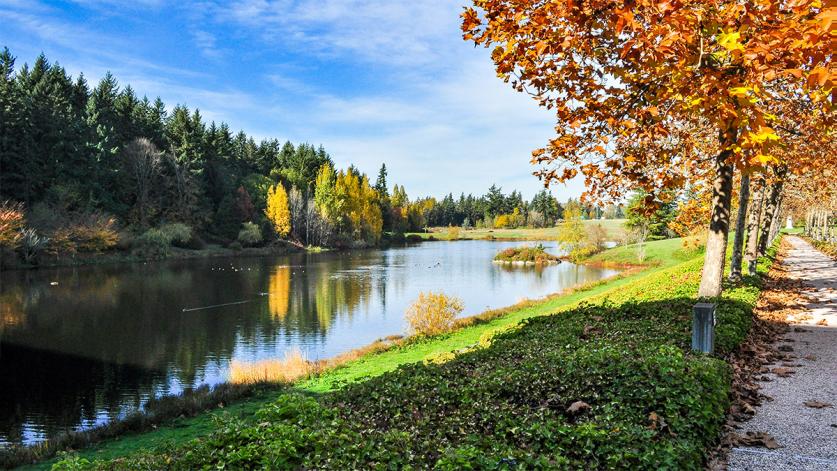
In a separate permitting process, the U.S. Army Corps of Engineers (USACE) is considering two independent permit applications related to the proposed development of the campus that would require the in-filling of wetlands. Given the determination that the campus is eligible for listing in the National Register, USACE is leading a Section 106 review as mandated by the National Historic Preservation Act.
The developer, Industrial Realty Group (IRG), doing business as Federal Way Campus, LLC, has hired an architectural historian to provide a formal assessment of the built-environment, as is required by USACE as a starting point for its review.
Since it purchased the property in February 2016, IRG has sought to subdivide the Weyerhaeuser campus to accommodate warehouse and industrial uses (allowed under the property’s 1994 annexation agreement) by developing some of the site’s large swaths of forests, meadows, and nature trails. Applications for municipal permits are already in the pipeline for a second large warehouse (Greenline Warehouse B), as well as the so-called Greenline Business Park — three more warehouses totaling some 1.1 million square feet on the north end of the campus.
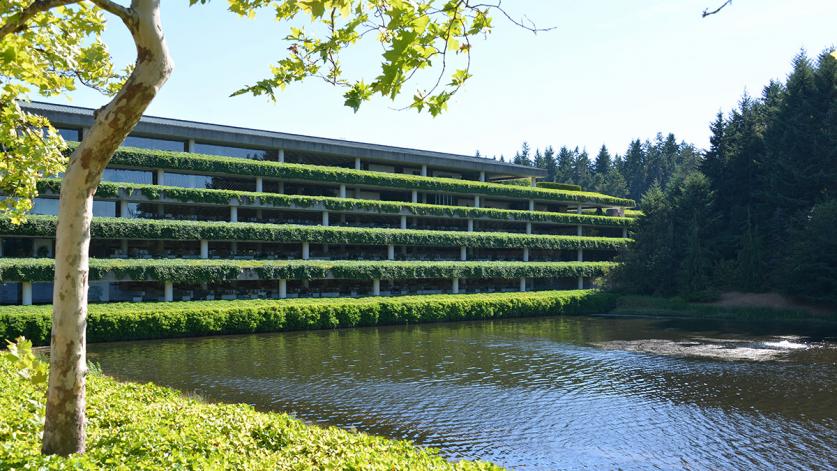
Save Weyerhaeuser Campus continues to advocate for the stewardship of the award-winning campus. Designed by Peter Walker of Sasaki, Walker and Associates in association with architects Skidmore, Owings & Merrill and completed in 1972, the campus is a Modernist masterpiece that broke new ground in the seamless way in which the headquarters building was integrated with the site, successfully reaching “a point where the landscaping and the building simply could not be separated, that they were each a creature of the other and so dependent that they could hardly have survived alone,” in the words of SOM architect Charles Bassett. The building, often characterized as a high-rise tipped on its side, contains roof gardens at every level, and Walker introduced drifts of alders at the forest’s edge to further enhance the visual connection between the valley and the wooded areas of the campus, describing the process as “forest management, rather than landscape design.” Indeed, the forest around the campus was carefully sculpted, removing dense underbrush and creating woodland trails.
Stakeholders and interested parties can learn more about, and participate in, the ongoing federal reviews by contacting the USACE representatives listed below, referencing file numbers NWS20171077 and NWS2017155.



